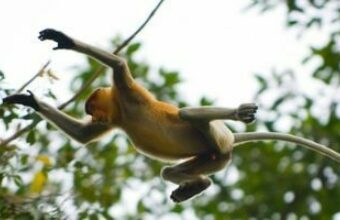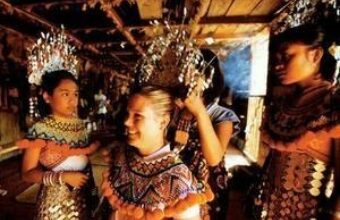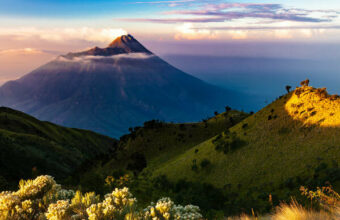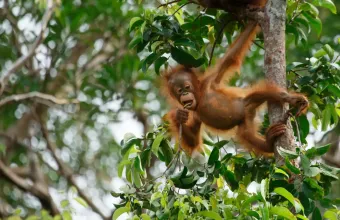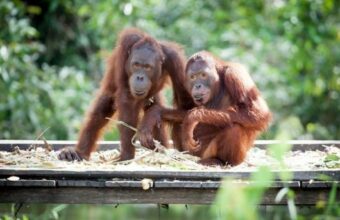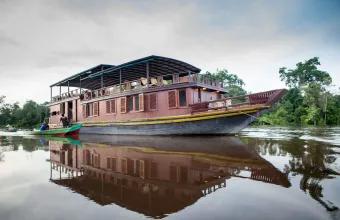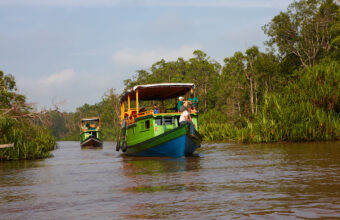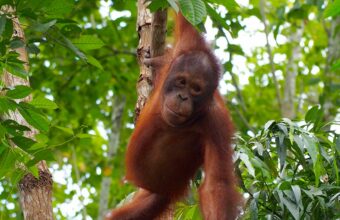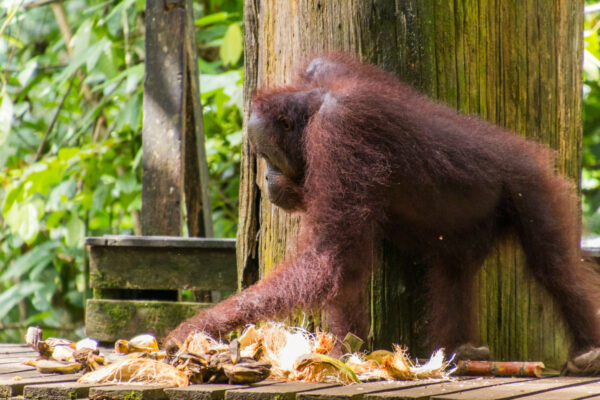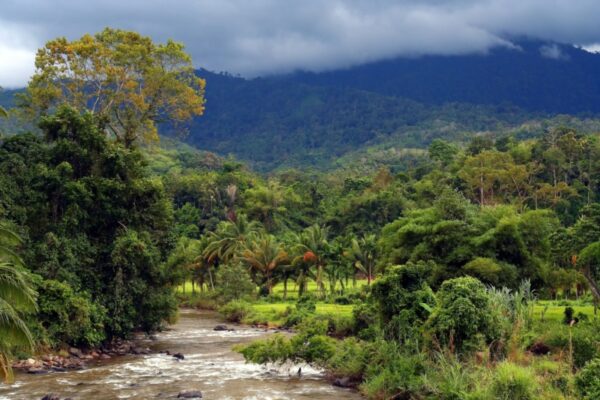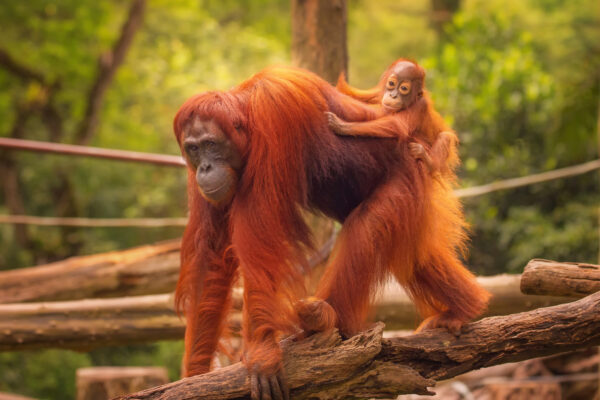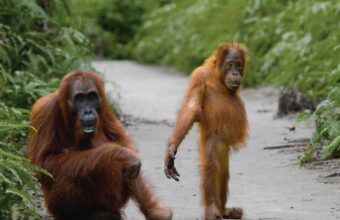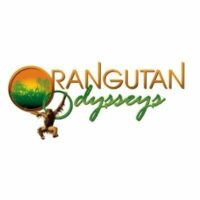Where To See Orangutans
The best places to see orangutans in Borneo and Sumatra
The best place to see orangutans is in the wild, on their native islands of Borneo and Sumatra.
In Borneo, orangutans are found in the two Malaysian states of Sabah and Sarawak, and in Kalimantan on the Indonesian side of the island. There is also a population on the nearby Indonesian island of Sumatra.
Your best chance of seeing wild orangutans is in Sabah, purely due to numbers. There are approximately 11,000 wild orangutans in Sabah, compared with just 1,600 in Sarawak.
Seeing orangutans in the wild means embarking on a (professionally guided) trek into the jungle, but there are several sanctuaries and rehabilitation centres which offer a more accessible way to see orangutans feeding and swinging through the trees. While many of these centres do invaluable work protecting and conserving orangutans, it’s well worth making the extra effort to try to see them in their natural habitat if you can.
Here's our rundown on the best places to see orangutans in Borneo and Sumatra.
Where to see orangutans: our expert picks
The best places to see orangutans according to our expert travel writer, Tamara Thiessen.
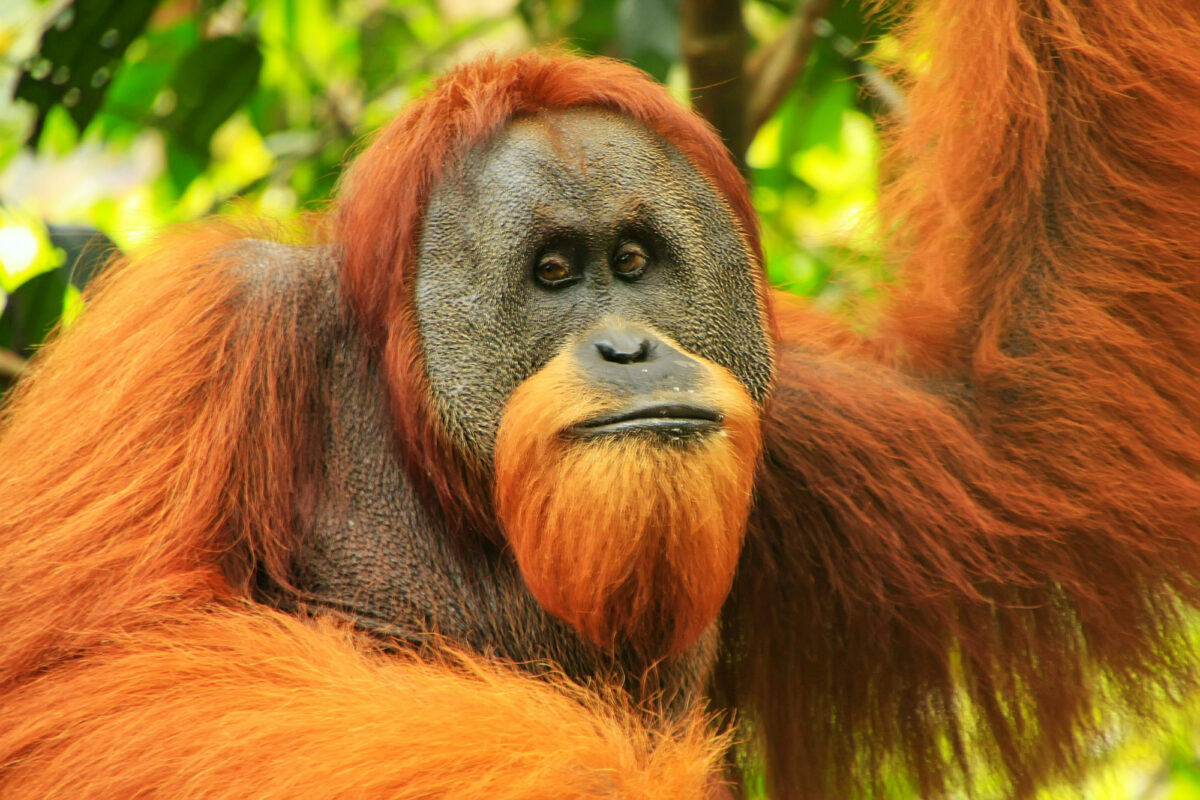
A male orangutan at Gunung Leuser National Park, Sumatra
Best places to see orangutans in the wild
Where to see orangutans in their natural habitats
The best place to see orangutans is in the wild, but that is easier said than done.
Put simply, to see wild orangutans you need to journey further into the rainforest, away from the bigger tour groups. In locations like the Kinabatangan River, you’ll slowly journey up the water on a klotok, looking for sun bears, crocodiles and proboscis monkeys before docking and touring through the jungle, listening to birdsong and tracking orangutans. Here, you might not see another tour group at all. The experience is completely different from a rehab centre.
Choosing where to see orangutans depends on the type of experience you want, level of fitness, the type of trip you want (hiking/boating) and what else you want to see on your trip. Expect to spend at least three to four days on a wild orangutan tour, staying either on a klotok boat or in rainforest lodges.
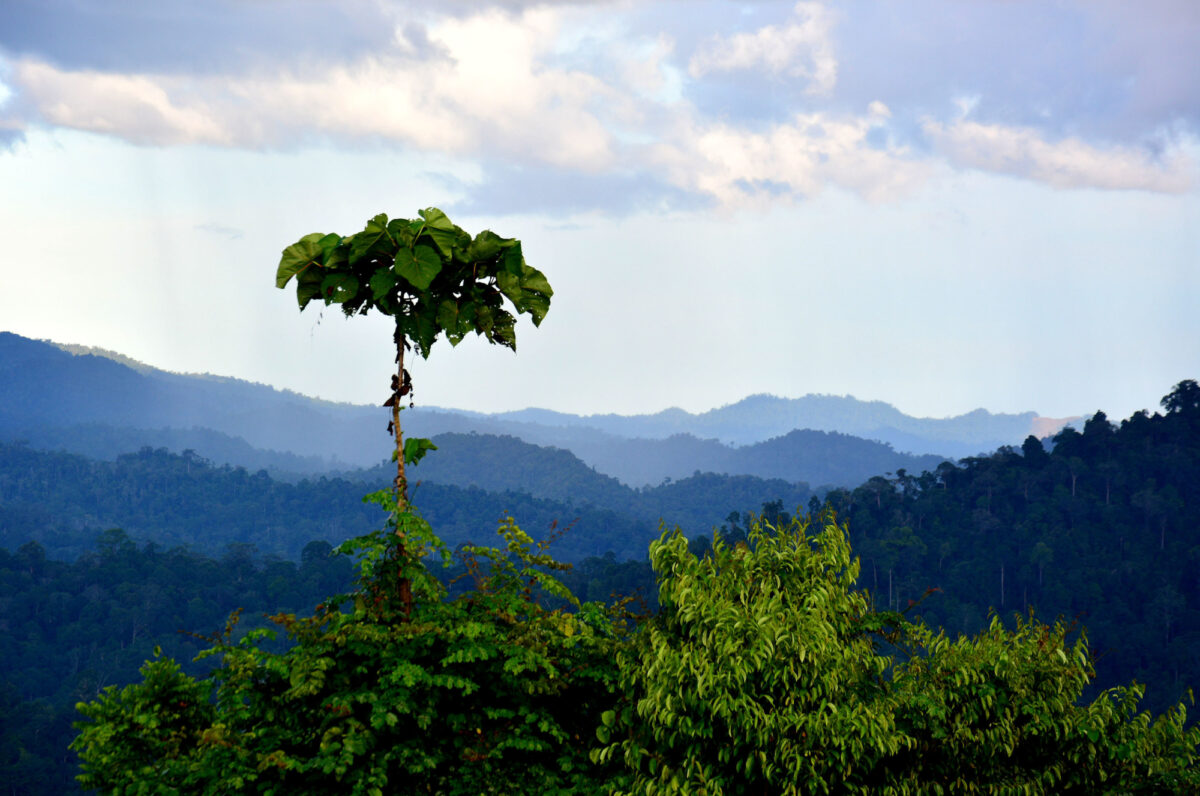
Danum Valley protected forest reserve, home to an estimated 500 orangutans
Danum Valley Conservation Area, Sabah
The 438sq/km Danum Valley protected forest reserve is one of the largest swathes of primary lowland dipterocarp rainforest in Borneo, set aside for wildlife conservation, research and education since the 1980s. Recent studies put the number of orangutans in the area at around 500.
This is the real jungle. Thick with trees and lush tropical plants, the Danum Valley is an isolated, wild area where orangutans, proboscis monkeys and many bird species can be spotted. For a proper jungle experience, try a nocturnal guided trek, when the forest comes alive with the sound of wildlife.
If you choose to visit Danum, you must book accommodation in advance at one of the only two lodges available: either the nuts and bolts accommodation of the Danum Valley Field Centre - one of the leading rainforest research hubs in Southeast Asia, or at the Borneo Rainforest Lodge, whose wooden chalets by the river constitute one of Borneo’s leading nature resorts.
Kinabatangan Wildlife Reserve, Sabah
The 560km Sungai Kinabatangan is Sabah’s longest waterway and the second largest in Malaysia. This mighty river is an excellent place to see both wild orangutans and in rehabilitation centres.
The best way of seeing the apes is to take a day or overnight tour from Sandakan. Several nature lodges located along the river offer wildlife safaris in the early morning, afternoon and evening, guided by excellent boatmen and spotters. These experts are adept at seeing orangutans sitting high in the mangrove trees along the riverbank chomping on fruits.
If you’re very lucky, you may even catch a glimpse of a Bornean elephant, while the river itself is home to freshwater sharks and crocodiles.
The area is also home to the Kinabatangan Orangutan Conservation Project, a conservation centre run in partnership with French NGO HUTAN.
Wildlife is present here year-round, though keep in mind March-April is the dry season.
Maliau Basin Conservation Area, Sabah
This pristine rainforest was unreachable for decades. Then, in the 1980s, scientists and primate researchers began to cautiously explore the area. Now open to a limited amount of tourism, this is a great place to see truly wild orangutans.
A word of warning — trekking here is arduous, so you’ll need to be physically fit.
Batang Ai, Sarawak
The only place to see wild orangutans in Sarawak, Batang Ai National Park is most famous for the contributions of the indigenous Iban tribe, who conserve the rainforest and conduct surveys into the orangutans. Make sure you take time to engage with Iban culture if you choose to look for orangutans in Batang Ai.
As part of the region’s largest protected area for tropical rainforest conservation, this 240sq/km park — together with the Lanjak Entimau Wildlife Sanctuary in Malaysia and Indonesia’s Bentuang Karimun National Park — forms a near 10,000sq/km sanctuary for one of the few viable orangutan populations in Borneo alongside other endangered species. There are an estimated 1,000 orangutans in Batang Ai.
For conservation reasons, only part of the park is open to visitors. With the highest orangutan population density in central Borneo (1.7 animals per sq/km), the chances of seeing a wild orangutan here are good. However, sightings should be regarded as a bonus, not a guaranteed experience.
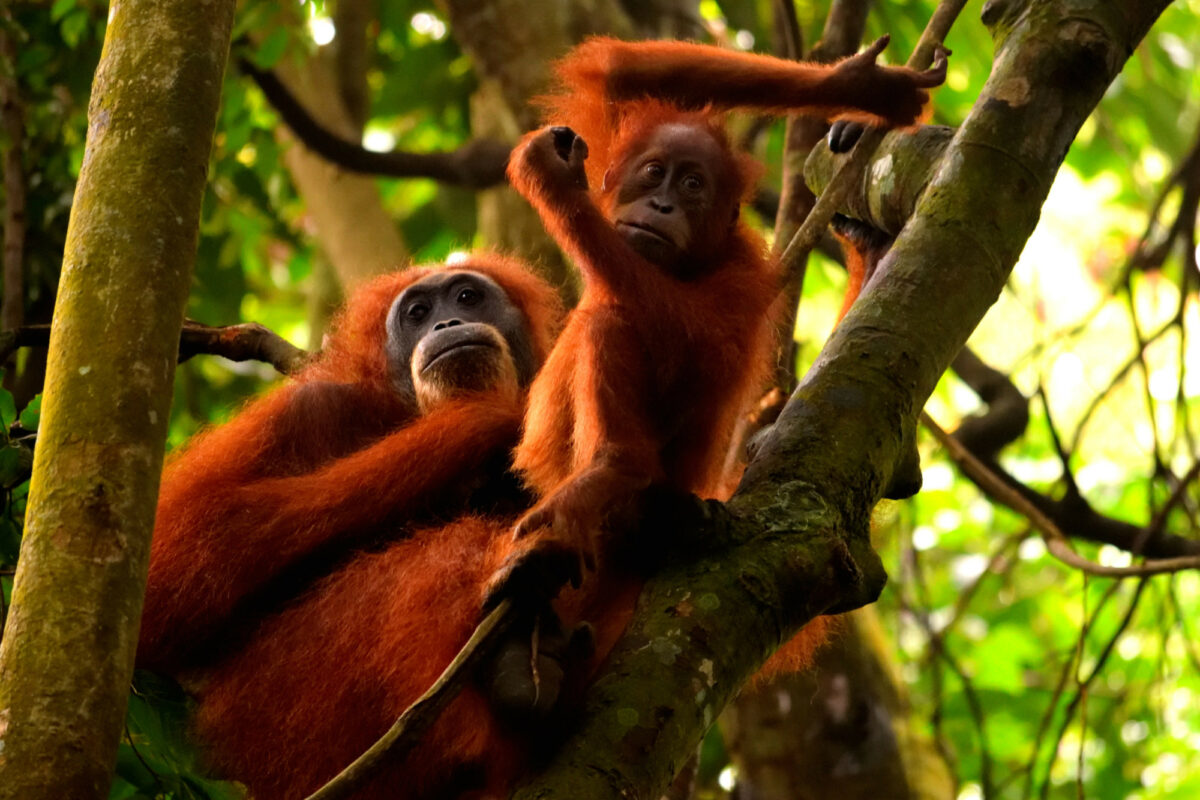
Mother and baby orangutan in Gunung Leuser National Park
Gunung Leuser National Park, Sumatra
Home to the Sumatran orangutan, UNESCO-listed Gunung Leuser National Park offers the opportunity to see proboscis monkeys, gibbons and hornbills. If you’re lucky, you may even spot the incredibly rare Sumatran tiger or rhino.
The main launchpad for the park is the village of Bukit Lawang, spread along the banks of the Sungai Bohorok river, on the eastern fringes of the park. The resort lies 90km west of Medan City, the main arrival point on the island by air.
Those travelling independently can also board a bus to Medan from the Pinang Baris bus station, but the relatively short journey will take up to four hours and coaches are not air-conditioned.
Visitors should be prepared to hike for several hours to reach orangutan nesting spots, but along the way you can spot Thomas Leaf monkeys, macaques and other apes. As you’ll be viewing orangutans in the wild, it’s vital that you follow the advice of your guides and respect the animals. Never feed them (this is so they don’t become reliant on humans) and keep a respectful distance.
Tanjung Puting National Park, Kalimantan
Home to the world’s largest population of wild orangutans, Indonesia’s Tanjung Puting National Park is also the base for several conservation centres. Most visitors take a traditional klotok boat upriver, looking for sun bears, proboscis monkeys, civets and gibbons. Visitors to this park normally spend a few days cruising upriver.
Starting from the Kumai river port in the central Kalimantan city of Pangkalan Bun, your guides will typically stop at three main feeding stations within the park, where you will get to experience semi-wild orangutans during feeding sessions. The best option for this is at Tanjung Harapan, but you’ll also stop at Pondok Tangui. Your final destination will be Camp Leakey, a 4-4 ½ hour journey upriver.
In general, orangutans around Camp Leakey are the most relaxed around humans. Look out for Tom, the camp’s alpha male (but if you do see him, be careful not to engage in a staring match).
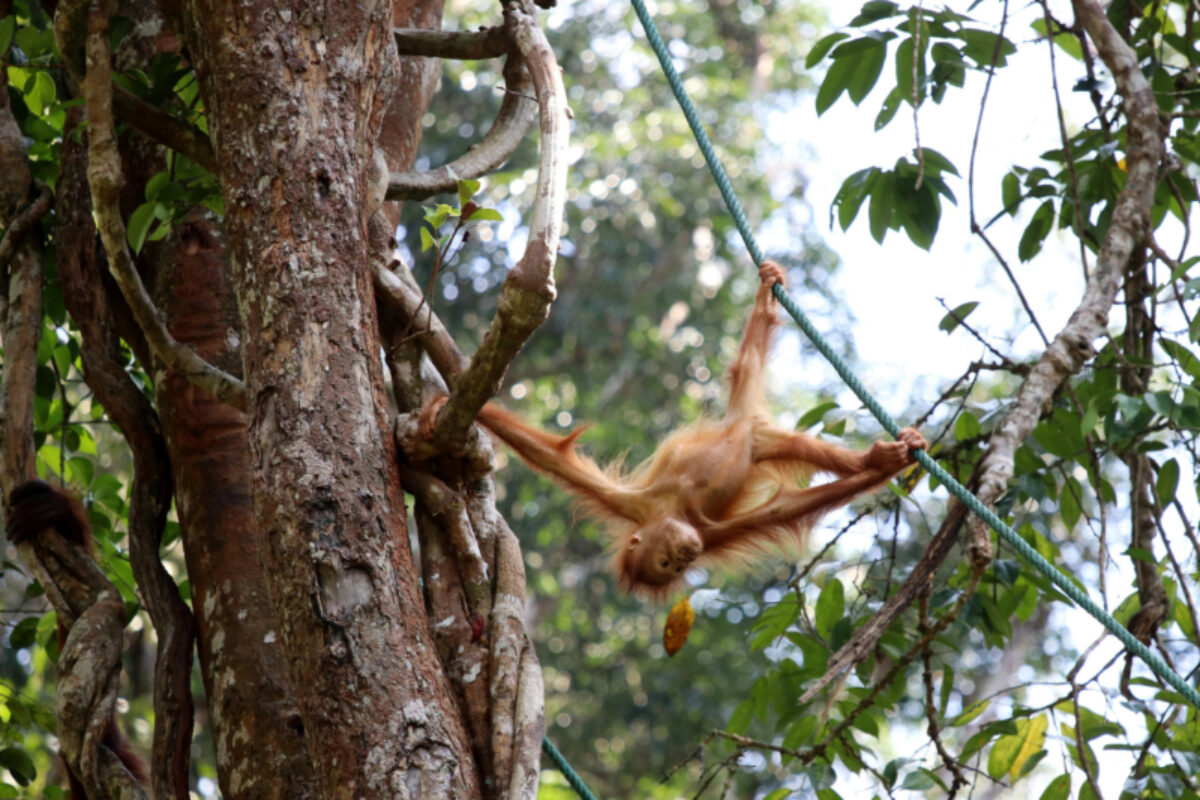
Baby orangutan at Semenggoh Wildlife Centre
Where to see orangutans in rehabilitation centres
Can you see captive orangutans ethically?
Orangutan rehabilitation centres provide a safe haven for orphaned and injured orangutans to recover with a view to being released back into the wild. Many offer feeding platforms for orangutans, where visitors can see the animals swinging through the forest.
Be wary of centres that promote direct contact with wildlife. For more tips, see How To Find A Real Sanctuary.
Sepilok Orangutan Rehabilitation Centre, Sabah
The largest orangutan rehabilitation centre in the world, Sepilok cares for orphaned orangutans who buddy up with older apes to learn how to survive in the wild. Visiting revolves around feeding times at the centre, but Sepilok also offers volunteer placements.
It’s important to follow the centre guidelines and never touch, harass or try to take selfies with the orangutans — remember this is a rehabilitation centre, not a zoo.
Sepilok is about 25km west of the waterside town of Sandakan. There are several daily flights in and out of Sandakan from Kota Kinabalu, Sabah’s capital, and some flights from Kuala Lumpur. If you are not on a tour, you can get there easily by car, taxi or by bus from Sandakan.
Semenggoh Wildlife Centre, Sarawak
A couple of hours from Kuching, Semenggoh is a rehabilitation centre for orphaned and injured orangutans. Here, they learn the survival skills needed for re-entry into the forest. Visitors get to see orangutans feeding in the morning and afternoon, where they can practice their swinging and nest building skills.
Some come within an arm’s reach and may sit alongside you on the feeding platform, while others hang out further back in the trees.
Matang Wildlife Centre, Sarawak
This unique wildlife centre offers refuge to injured an orphaned orangutans, as well as other wildlife such as sun bears and civet cats. Visitors can watch the animals feeding, or for the more adventurous, volunteer on placements.
Camp Leakey, Tanjung Puting National Park
Perhaps the world’s most famous orangutan centre, Camp Leakey, in Tanjung Puting National Park, is named for the legendary primatologist Louis Leakey and is run by Dr Birute Galdikas. Come for feeding time and the world-class information centre.
“One of the natural wonders of the world”, according to the UK’s Orangutan Foundation, Taman Nasional (National Park) Tanjung Puting is also one of the major hopes for the orangutan's survival. Set amid the largest swathe of coastal tropical heath and peat swamp forest, which used to cover much of southern Borneo, Tanjung Puting started out as a game reserve in 1935 before becoming a National Park in 1982.
Be aware that boat congestion on the river can be very high between July and September, which is one reason to consider visiting during low season months of November to April (it is also less expensive).
Volunteering with orangutans
The perils of wildlife volunteering
The dangers facing orangutans are many: deforestation, illegal logging, being kept in captivity and hunting are all contributing to a declining orangutan population. Simply visiting with a responsible tour operator is by far the best way to help the critically endangered orangutan. Your visit creates economic value in the protection of their natural habitat, and contributes to the livelihoods of those who have a direct stake in orangutan conservation.
Due to persistent reports of unethical and poorly-managed programmes, Horizon Guides will no longer include any details of orangutan volunteer organisations. We advise you to visit Borneo with a reputable operator and leave the important conservation and rehabilitation work to the professionals.
For more information on orangutan conservation issues see the excellent Friends of the Orangutans website.
Read more
A good indicator for a responsible voluntourism programme is whether or not you'll be expected to do work for which you're unqualified in your home country. For instance, at home, would you be qualified to come into direct contact and work with wild animals? If not, then you shouldn't expect to do so on a volunteering project abroad. For a detailed look at how to find and plan a successful and worthwhile volunteering trip see our companion guides, Adventures Less Ordinary: How to travel and do good and Wild Encounters: Ethical tourism for animal lovers.
How to see orangutans responsibly
How to have an ethical and safe trip
Orangutans may be our closest relatives, not chimps — at least if you believe a 2009 American study, which suggests that as well as sharing nearly 97% of our DNA with orangutans, we also share 28 physical characteristics. Whatever the case, orangutans are extraordinarily humanlike in their gestures. They are capable of learning complex tasks, expressing emotions and developing strong bonds.
When visiting orangutans in the wild or in conservation centres, it’s best not to have any expectations. This will allow for the unpredictability of the experience to take its natural course. Everyone experiences orangutan viewings and interactions in a different way.
Orangutan viewing guidelines
Regardless of whether you choose to see orangutans in the wild or at rehabilitation centres, always remember that you’re looking at a wild animal.
Keep a respectful distance — Stay at least 10m away from any orangutan so that it does not feel threatened
Don’t feed the orangutans — Never feed the orangutans. Doing so encourages behaviour that is detrimental to their survival in the wild
Stay away if you feel ill — Humans can be extremely contagious to orangutans and can transmit airborne diseases. Some viewing places will ask you to wear a mask
Keep noise down and don’t disturb the natural habitat — Keep your voice low and never call out to an orangutan.
Visit local communities and use local guides — Conservation and sustainable ecotourism relies on the participation of the local community.
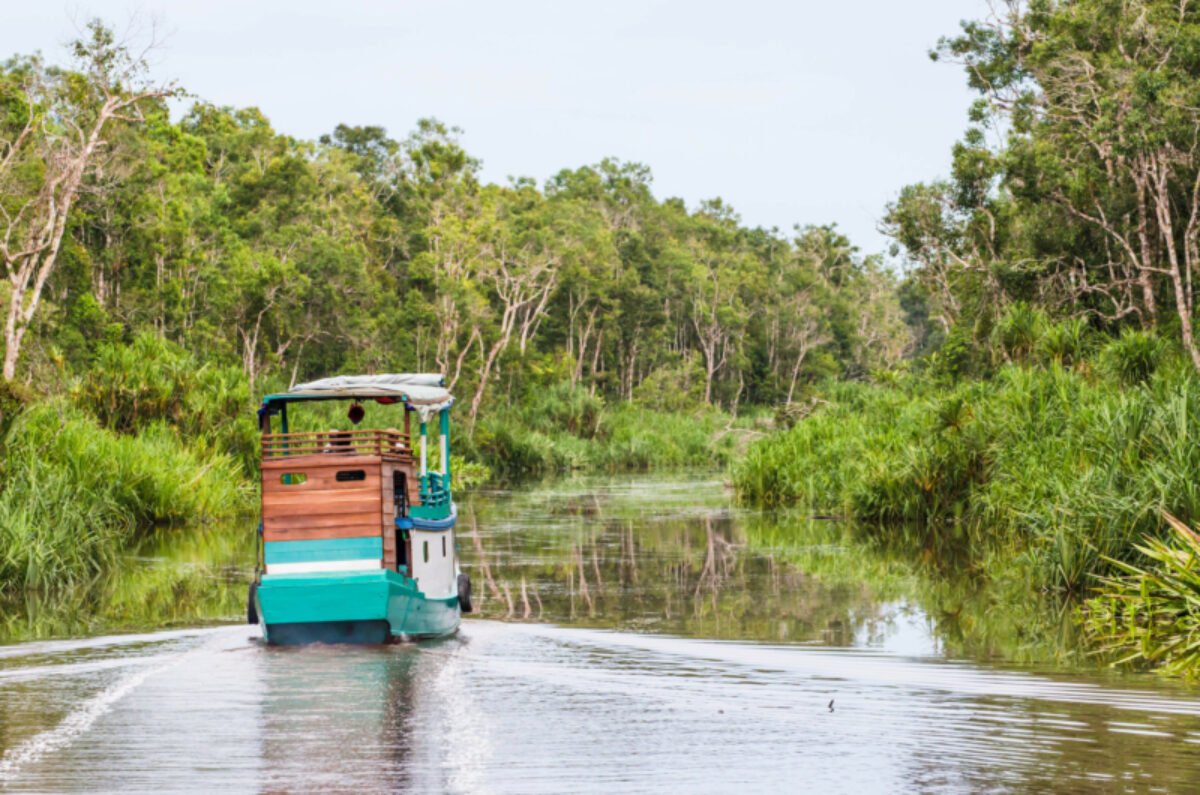
Traditional klotok sailing through Tanjung Puting National Park
Seeing orangutans: FAQs
All you need to know to begin planning your trip to Borneo
What's it like to see orangutans?
No tour company will be able to guarantee that you’ll see orangutans on your trip. However, choosing to visit an orangutan rehabilitation centre makes it much more likely. Here, rangers call out to the orangutans as they carry sacks of bananas and sugar cane to the feeding stations. This will usually be greeted by whooping and the sight of orangutans swinging through the trees as they come for a free meal. You’re more likely to see a female and her babies than a large male orangutan.
Seeing orangutans in the wild can be a much more fleeting experience. You’re more likely to catch a glimpse of an orangutan in a tree than up close at a feeding station. However, this is a much more immersive experience, involving cruising up a river on a klotok, staying with indigenous tribes and learning more about the rainforest.
Alongside orangutans, there are many other animals worth seeing, from sun bears to macaques, hornbills to crocodiles and all sorts of creepy crawlies.
Is it safe to see orangutans in the wild?
Orangutans are gentle giants and attacks on humans are very rare, but they have happened when the apes feel threatened. In order to avoid threatening orangutans, be respectful of the animal. Always move at least six metres away from an animal that is on the ground. Never try to take selfies with orangutans and be aware of guides that encourage you to do so — this behaviour can be extremely stressful for orangutans.
When viewing the animal in the wild, contact is best avoided to stop orangutans becoming too used to humans and developing bonds with them. While you do not need any vaccinations to visit orangutans, humans can communicate certain diseases to orangutans and vice-versa, so contact is discouraged.
What should I pack to see orangutans?
It’s vital to wear cool, breathable clothes when visiting orangutans, particularly in the wild. Humidity in Borneo’s rainforest can reach up to 95% and it is very hot, so you’ll be sweating. Wear fabrics like cotton or linen and bring plenty of water and sunscreen. Try to wear long-sleeve tops and trousers if jungle trekking — leeches are common. The region is also prone to occasional downpours, so bring a light waterproof jacket.
Depending on how you choose to see orangutans, you may wish to bring walking boots. If you’re only visiting the rehabilitation centres, most paths are well trodden so trainers will probably be enough.
Do I need any vaccinations to see orangutans?
There are no vaccinations required to see orangutans, but humans can pass certain diseases on to orangutans and vice-versa, so contact is discouraged. Depending on where else you choose to visit, you may need to take malaria tablets or have vaccinations. As with any travel, speak to your doctor to get the most up to date medical advice.
What will seeing orangutans be like?
Try not to have any expectations. Remember that it is a privilege to see these animals at all and each experience will be different. Respect the orangutan, so do not call out to it, feed it or approach it. There are other reasons for this: to rule out potential danger if the orangutan feels threatened, and to avoid the animals becoming too used to humans or developing bonds with them.
What’s the difference between visiting orangutans in the wild vs conservation centres?
Orangutans on show in conservation centres are just that. Remarkable as they are, the spectacle is staged and the orangutans are habituated to come every day at the same time for food. This does not rule out variety, or unpredictability, but narrows it down.
Seeing orangutans in the wild is more difficult, but is also more exciting and more compelling. It can also be disturbing when you see their natural environment being compromised by forestry, palm oil and other industries.
How can you ensure that the places you visit are ethical?
Choose your tour group well. There are a handful of local setups — in Sarawak, Sabah, and Borneo-wide — who really stand out as ecotourism pioneers. Going local is generally better. Try to use a tour company who is genuinely local (and not just a foreign interest with a local shopfront), and is actively involved with local communities and on the ground conservation. When booking with them, always mention this as one of your reasons for getting involved.
How physically difficult are orangutan treks?
This depends entirely on the tour you choose to take. Some jungle treks allow you to decide how much or how little you trek, while others feature full-on itineraries with full-day walks. Whatever option you choose, it’s important to remember that the climate will play a big part in how physically fit you feel. With high humidity and temperatures, it is easy to get more tired, more quickly.
What is life like on board a klotok?
Klotoks are the famous houseboats that you’ll sail on to reach more remote parts of the jungle or rainforest. Typically, visitors will stay for several days on board the klotok while exploring the rainforest. On most klotoks, you’ll sleep on the top deck in the open air, with mosquito nets and clean bedding. Showers are generally buckets of water (although more upmarket ones may have showerheads) and most don’t have electricity.
A klotok tour is a chance to unwind and experience the jungle scenery, away from the gadgets (and comforts) of modern life. Apart from trekking, watching the jungle go by and eating delicious home-cooked food, there is little else to do — but that can make for a magically relaxing experience.

